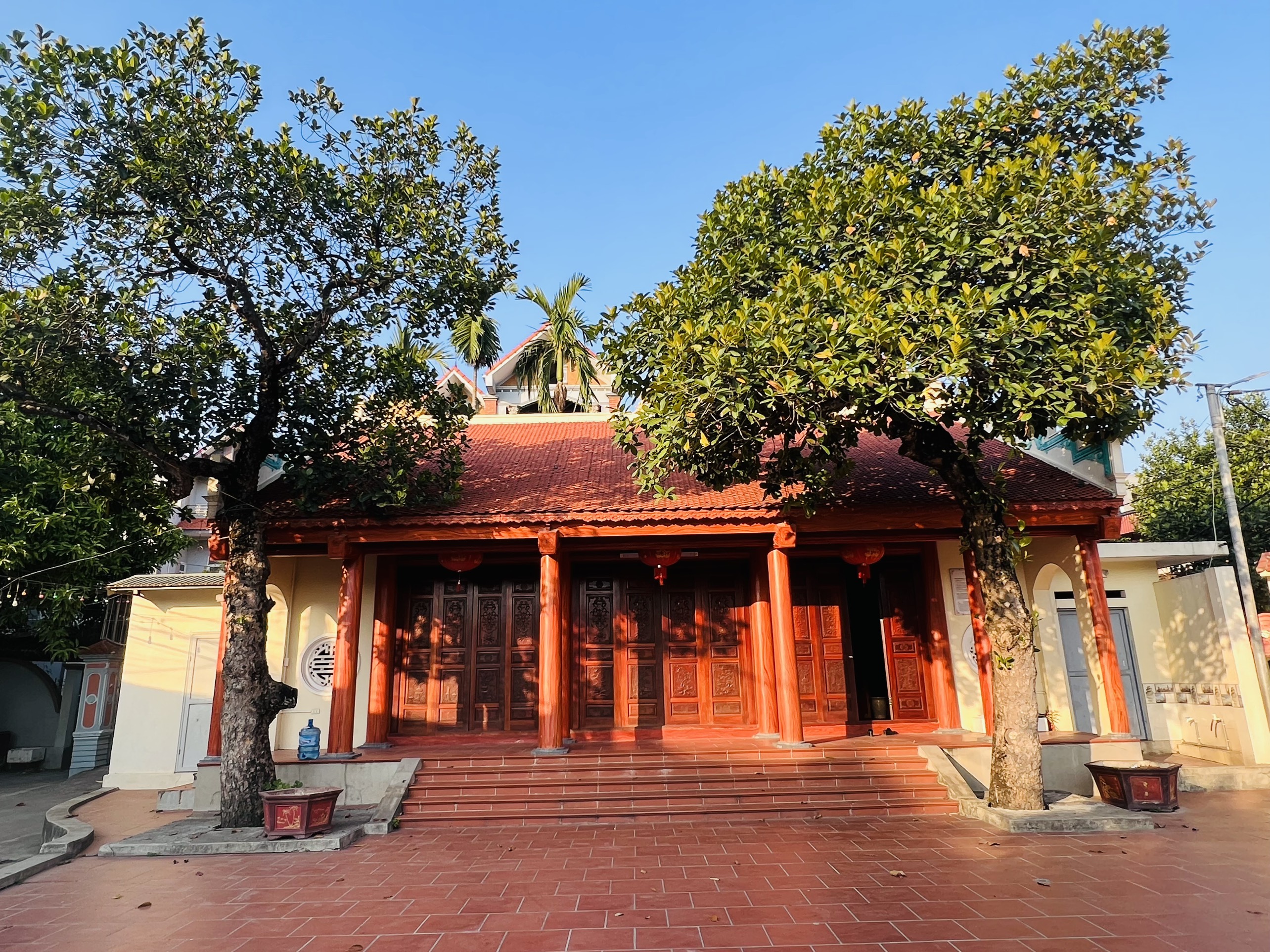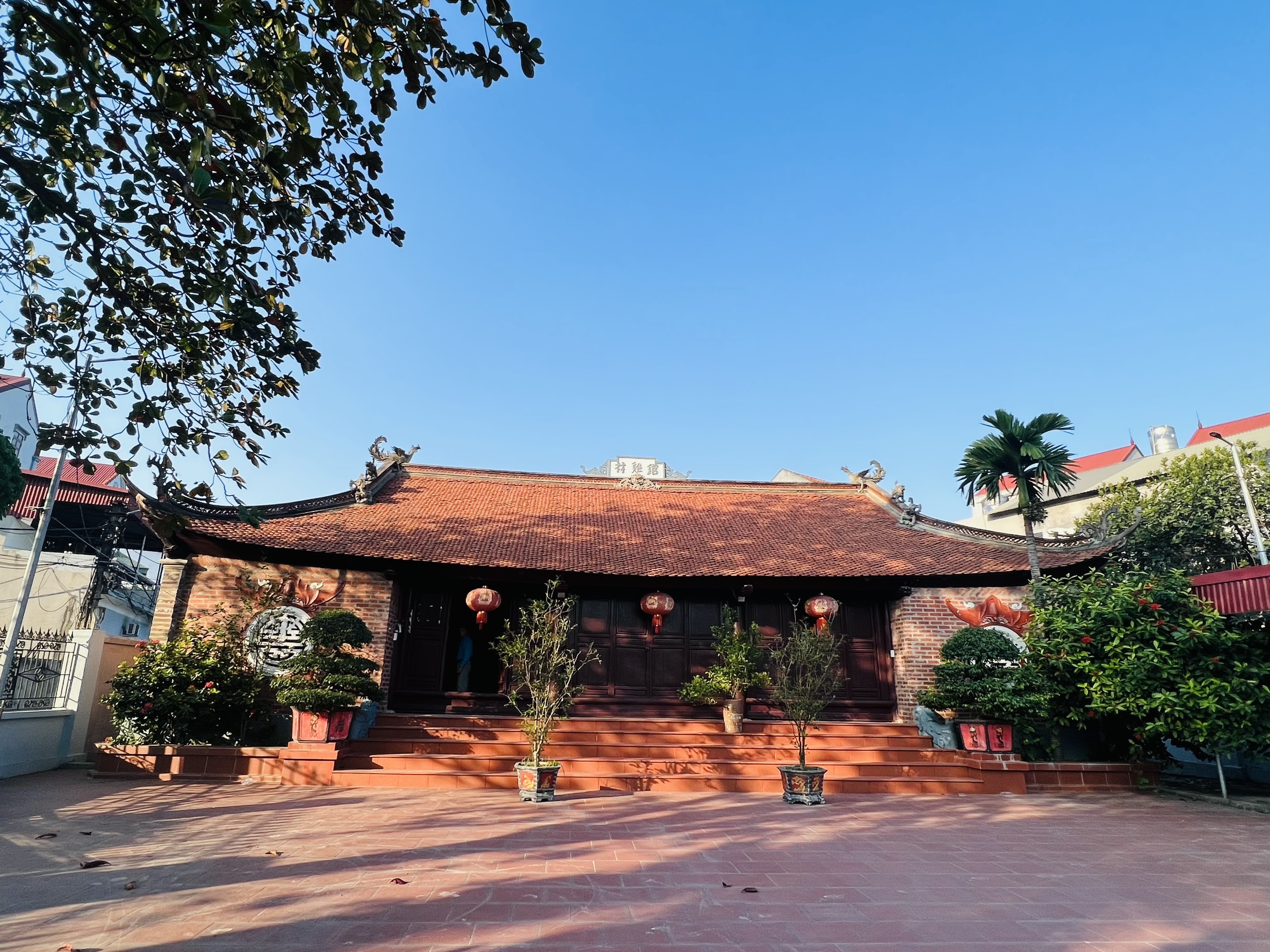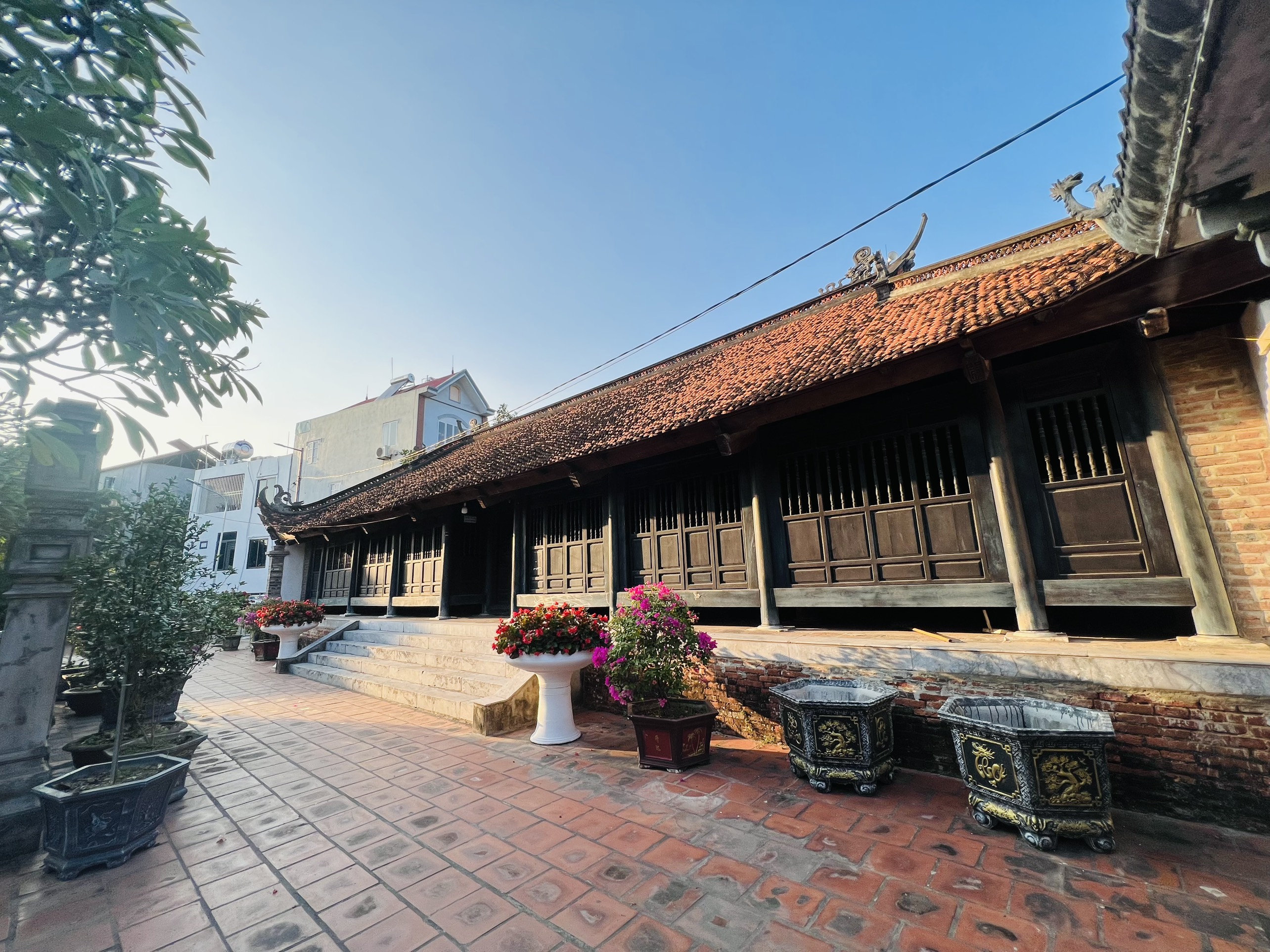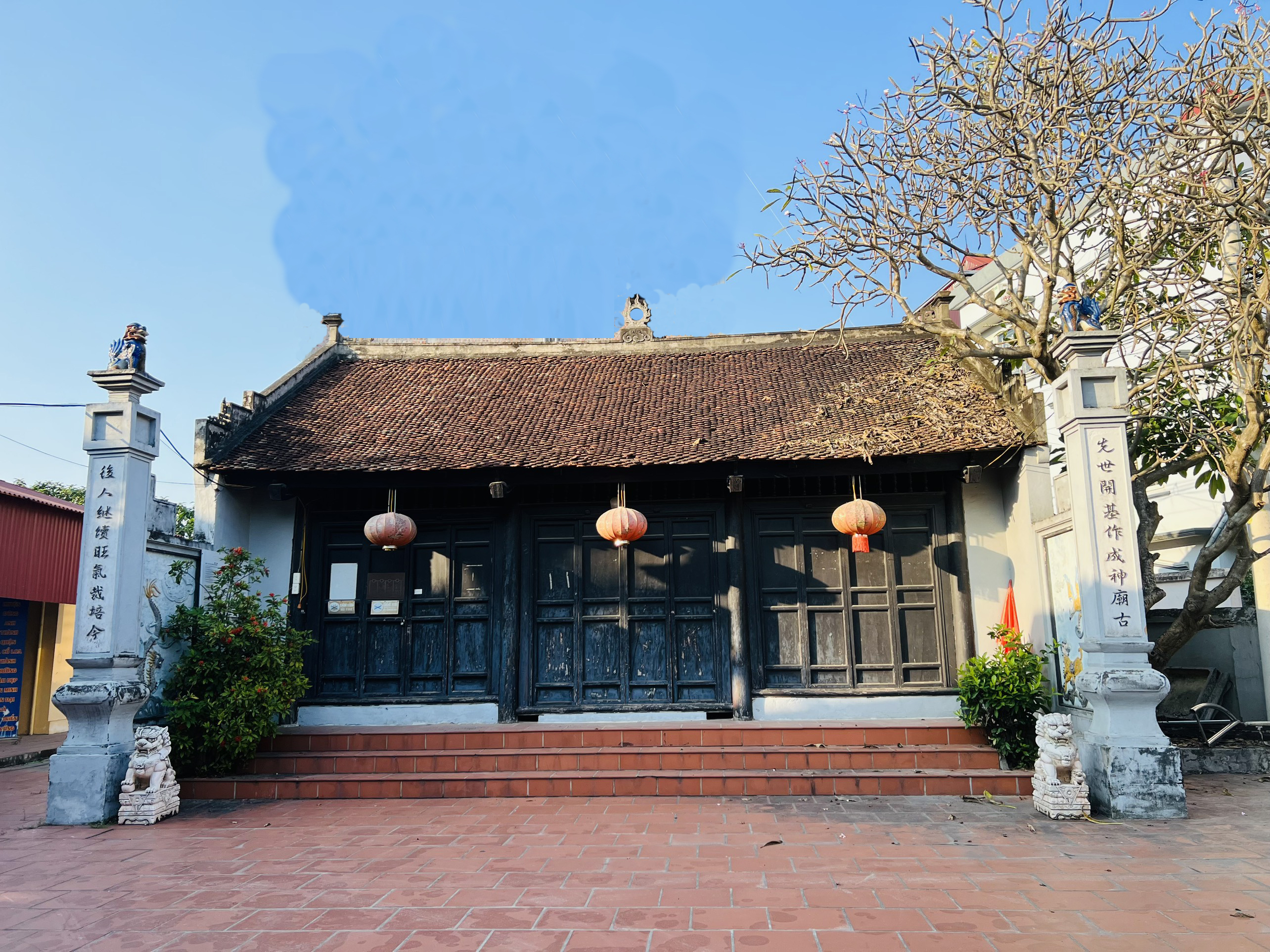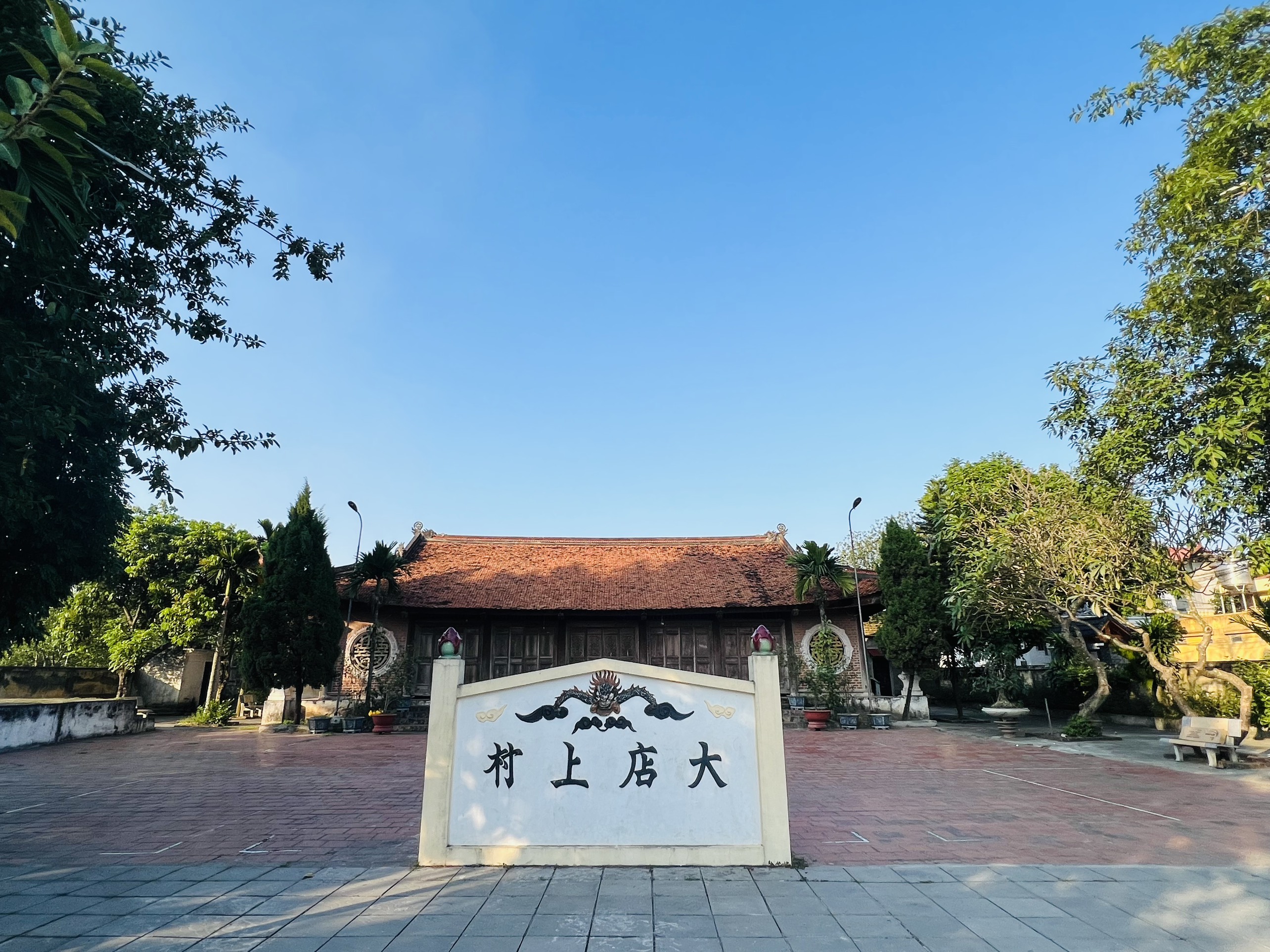Mỵ Châu Shrine is also known as Bà Chúa Temple or Mỵ Châu temple located in the west of Ngự Triều Di Quy communal house. In front of the shrine there is a banyan tree that is said to have been planted by Ngô Quyền. This banyan tree is very large, so it is often called a thousand-year-old banyan tree, now no longer exists, only a brick arch remains, a vestige under the arch of the banyan roots when far away.
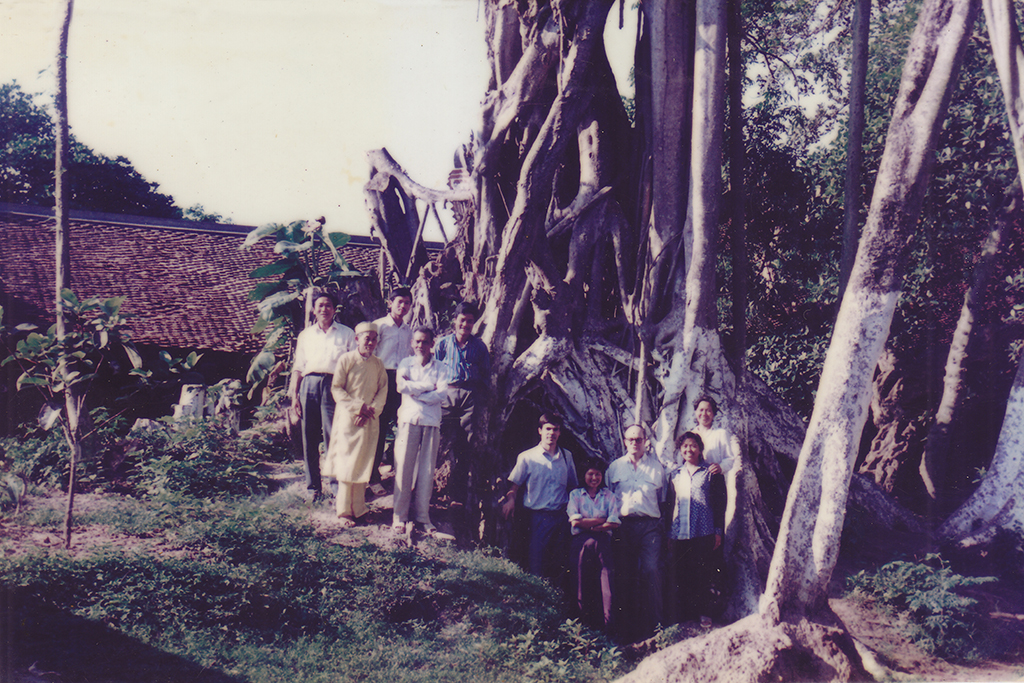 Shrine to Princess Mỵ Châu by the one-thousand-year-old banyan tree (photo taken in 1993)
Shrine to Princess Mỵ Châu by the one-thousand-year-old banyan tree (photo taken in 1993)
Arched entrance to the Mỵ Châu Shrine
The shrine area is an architecture consisting of two main parts. Forecourt is a house built of wood with 3 compartments, the roof is covered with Vietnamese Terracotta Roof Tiles. The”bộ vì” (The primary wooden truss) are made in the style of "thượng giá chiêng, hạ chồng rường, kẻ bẩy" (gong-hanger tie). All the components are not carved with any patterns, but are only smoothen. This architecture dates back to late (late 19th century early 20th century). On the rafters, there is a Chinese inscription stating the date of restoration: “Việt Nam dân chủ cộng hoà, tuế thứ Quý Sửu” (Democratic Republic of Vietnam, Quy Suu) (1973). The sanctuary is a vertical building, the main bearing structure is the walls built on 3 sides, so that only 2 side doors can connect with the Forecourt
Mỵ Châu Shrine
At the Forecourt on both sides of the gable of the house, there are couplets: “Trung tín nhất tâm chiêu nhật nguyệt; linh quang vạn cổ đẳng càn khôn” (rough translation: a faithfulness like the moon and stars; the heroic spirit is as bright forever as heaven and earth). In the middle, there is an altar called "Hương án tiền", above there is a letter with 4 Chinese characters: “Tốn cung diên tuý” (Daughter's Palace) and there are 4 pairs of couplets about loyalty of Mỵ Châu. Couplets at the column next to the alter: “trung tín thệ tâm thân hoá thạch; hưng vong sái lệ vọng trầm châu” (loyalty in the heart swore to turn the body into stone; the tears crying about prosperity turned into pearls in a deep well). In addition, an other couplets: “Phái diễn ngàn hoàng trịnh liệt cao huyền thiên cổ kính; ba trừng ngọc tỉnh hiển linh quang bạch nhất sinh tâm” (her lineage is a descendant of Lac Hong, that chaste heart has been exemplified from far away; the jade well radiates a sacred light reflecting a sincere heart).
Going inside, in front of the sanctuary, there is an altar of "twelve sisters" - the princess's servants. There are a couple of parallel sentences on the pillars on both sides of the altar: “Thiên tải thượng thị gia phi thuỳ năng biệt chi quy chảo nỗ cơ truyền ngoại sử; ngũ luân chung phụ giữ phu quả thục dân giã bạng khai tỉnh thuỷ đội thâm tình” (Thousands of years have passed, right and wrong, who can be justified, the turtle's claws making the magic crossbow are just legends; in the five rings, who is the father and husband who is closer, only pearls and water from a jade well can prove it).
The sanctuary is where the altar is located to worship Mỵ Châu. There is a throne on top. The innermost compartment is where the stone statue is placed. This is the "Mỵ Châu stone statue" told in the legend. It can be added that: the place where Mỵ Châu was beheaded by his father is Mo Da pass in Nghe An province today, but according to the legend, the petrified statue drifted to the outer rampart. In Nghệ An, there is also a temple to worship An Dương Vương, next to it is a temple to worship Mỵ Châu. That place is called Cuông mountain, now the temple is on the top of the mountain, also known as Cuông temple.
